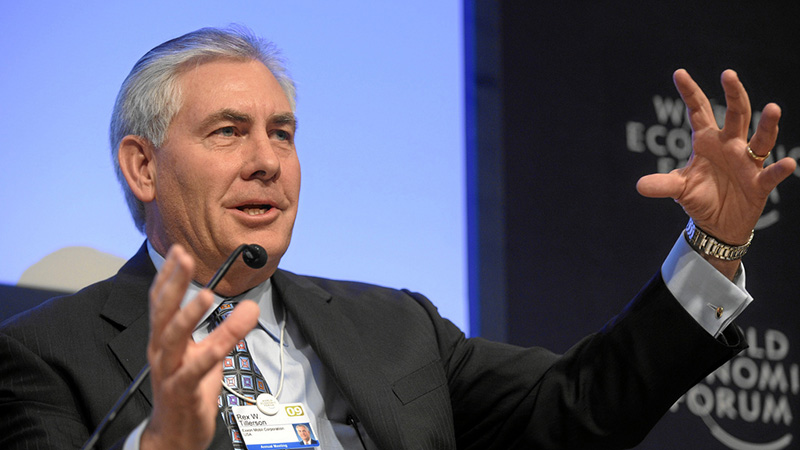Exxon Mobil published its 2017 energy outlook this week. It didn’t get a lot of attention.
All the oil majors churn out these reports each year. They are not business plans, but they might as well be. Companies invest on the basis of the future they expect to see.
Since Donald Trump has chosen Rex Tillerson, CEO of Exxon, as US secretary of state, it has a deeper significance. This is how America’s next chief diplomat understands the world.
It is a vision that will smash the “safe” 2C limit 195 nations in Paris last year agreed to place on global warming.
Tillerson may have endorsed climate action, unlike the rest of Trump’s cabinet, but he expects the Paris Agreement to fail.
ExxonMobil supports the work of the Paris signatories #COP22 Read more here: https://t.co/OriM5ONhkD
— ExxonMobil (@exxonmobil) November 10, 2016
Exxon foresees global energy demand will rise 25% by 2040, even with a doubling of the rate of energy efficiency improvement. Oil and gas will supply nearly 60% of that demand. Conveniently, that’s what it’s flogging.
Under this scenario, emissions peak in 2030 then start to decline. For comparison the International Energy Agency (IEA) 450 scenario, which gives a 50% chance of staying within 2C, sees energy-related emissions already falling by 2020.
The moral argument underpinning Exxon’s analysis is that energy poverty kills. Developing countries have a right and an opportunity to expand access to energy. So far, so reasonable.
What is missing is a sense of how unfettered climate change will hurt those same people toiling in the dark. Not to mention the air pollution, economic volatility and geopolitical risks that come with relying on fossil fuels.
Weekly briefing: Sign up for your essential climate politics update
Oil companies tend to present their projections as hard-headed realism. We don’t *want* the world to burn, they shrug, but clean technology just can’t compete at scale.
Increasingly, they are finding they don’t have the monopoly on reality. None predicted solar power’s extraordinary growth spurt, with panels now supplying cheaper electricity than new coal plants in many parts of the world.
Some are bowing to pressure from shareholders and considering a wider range of possibilities.
In May, for the first time, Shell published a paper outlining what would be required to get to 2C – with the caveat it considered the underlying assumptions to be “optimistic”.
BP is preparing something similar. One scenario looks at what would happen if electric vehicles take off faster than anticipated, a source familiar with the initiative told Climate Home.
Another deals with the risk – no less pertinent to investors – that coal will win out over less-polluting gas in the power generation mix.
Profile: Meet the investors pushing climate reality on carbon majors
These are highly technical exercises drawing on a large body of energy data. Yet there is always uncertainty. Much hinges on the signals politicians send to the market.
During Tillerson’s reign, Exxon dabbled in low carbon innovation, but did not significantly shift investment. What was needed, he argued, was a revenue-neutral carbon tax.
It’s a policy many economists support, but effective carbon pricing has struggled politically in the US and worldwide. Nor have the lobby groups Exxon supports been exactly constructive on this issue. Greens question his sincerity.
Now he is crossing over into public service (subject to senate approval), Tillerson can look at Exxon’s outlook not as an inevitable result of market forces, but a trajectory he can influence.
It might not be his direct responsibility at the State Department, but if he really believes in carbon taxation, he can put it on the cabinet table. Trump has big infrastructure plans to fund, after all.
